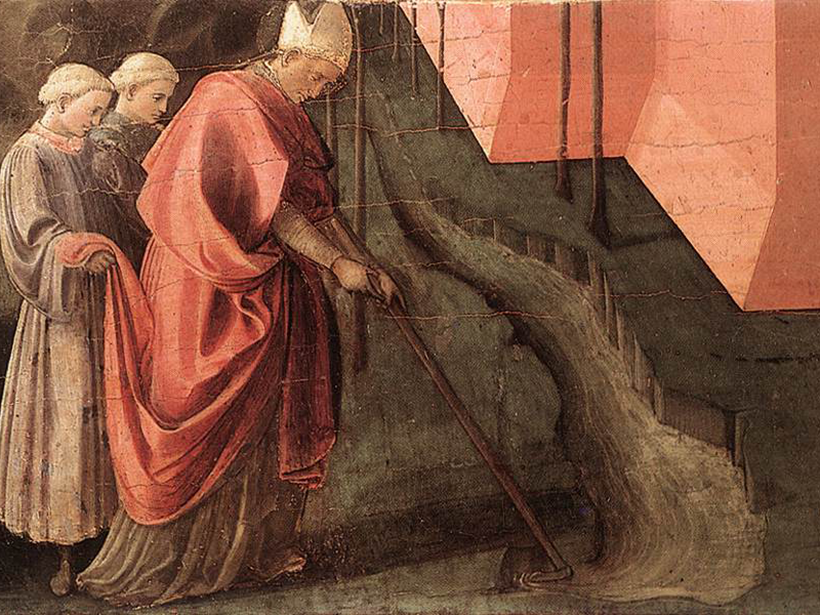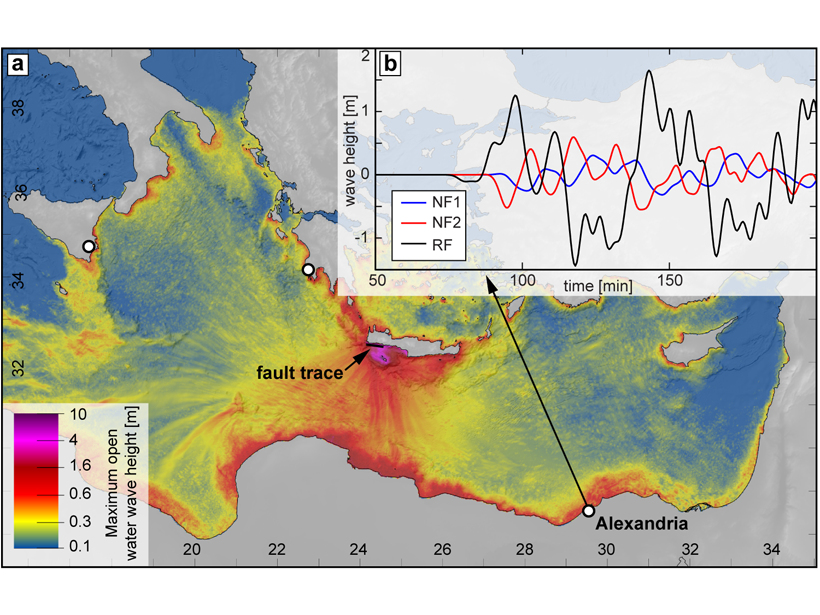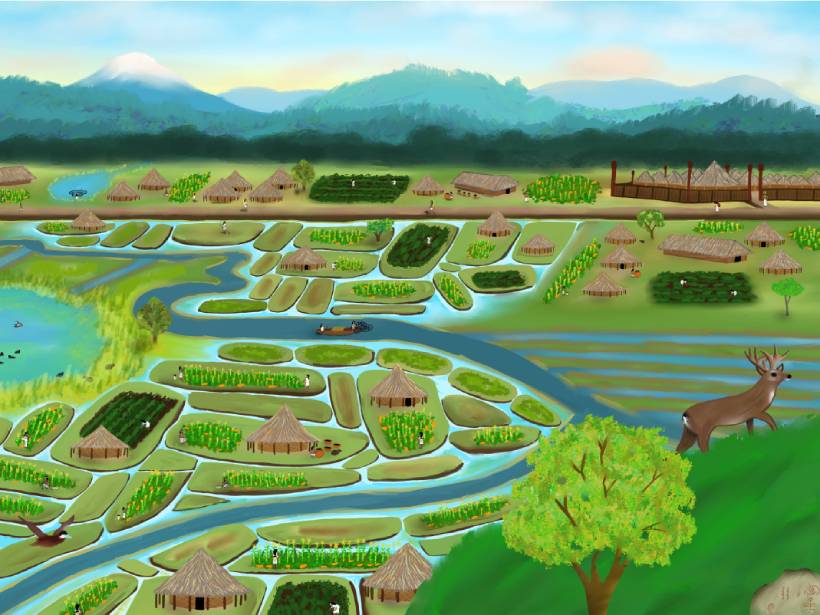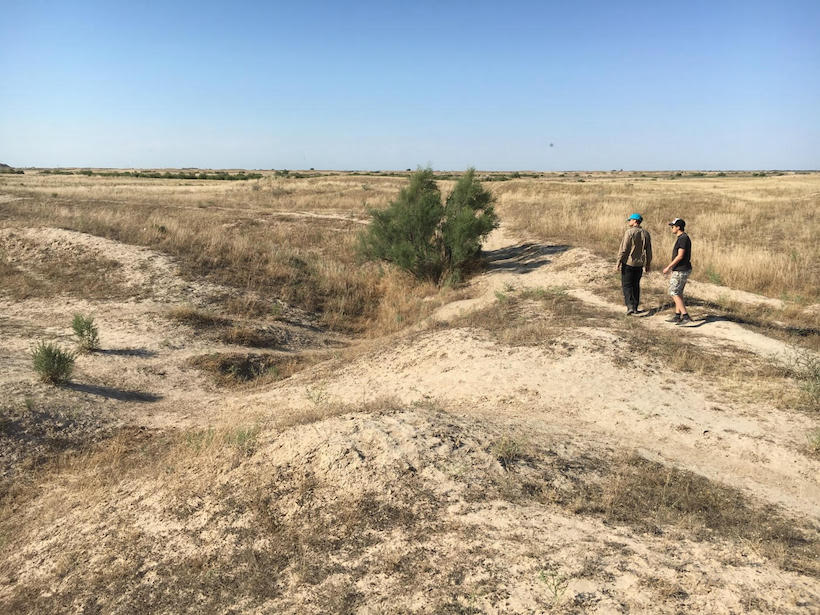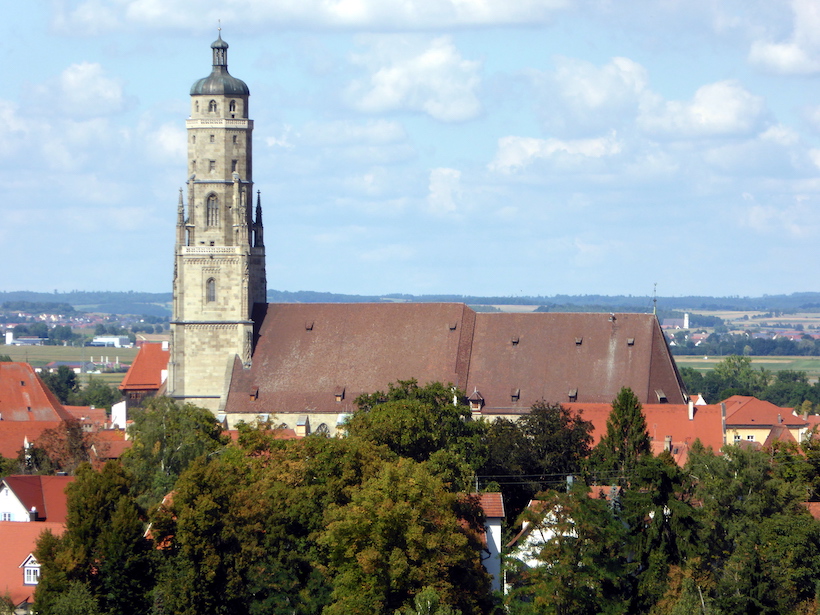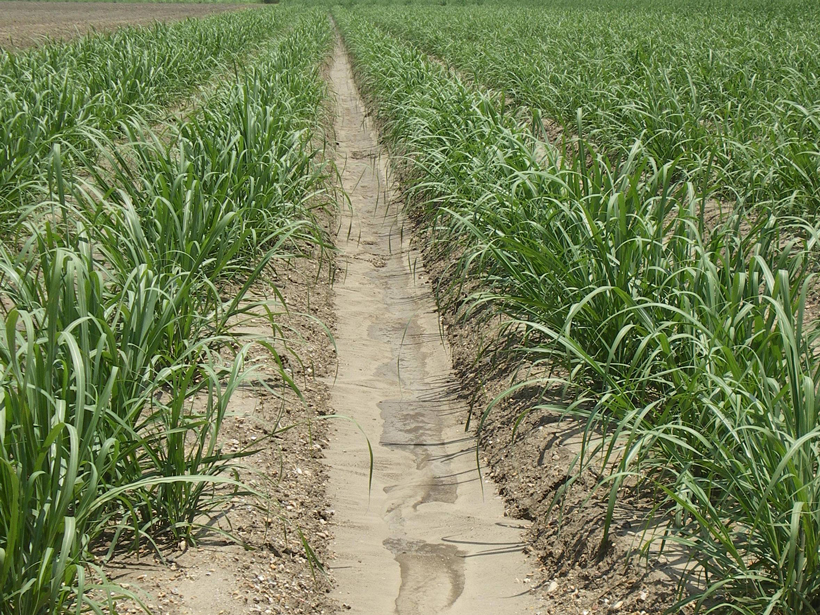In 6th century Italy, saints were said to perform an unusual number of water miracles. Paleoclimatological data from a stalagmite may reveal why.
history
Was the AD 365 Mediterranean Earthquake Normal?
The great AD 365 earthquake at Crete has implied a locked Hellenic subduction zone that can produce more earthquakes to threaten Mediterranean coastlines. But what if wasn’t a subduction zone event?
Ancient Maya Made Widespread Changes to Wetland Landscape
A system of canals 2 millennia old sustained a local population after the collapse of its neighbors, and it continues to affect local ecology today.
Teaching Geoscience History in Context
The history of geoscience is filled with racist ideology and problematic foundational figures. A new set of modules aims to help educators by offering more inclusive context for inequities in the field today.
Aerial Photographs Uncover Bogotá’s Indigenous Hydraulic System
Complex hydraulic systems built by the Muisca people helped define the vibrant urban wetlands of Colombia’s capital city.
Ancient Eruption May Change Our Understanding of Modern Volcanoes
Bubbles trapped in magma from a 1,000-year-old event reveal how scoria cones might erupt and what impact they may have on the landscape and atmosphere.
Drought, Not War, Felled Some Ancient Asian Civilizations
Radiocarbon dating, luminescent sand grains, and climate records point to drought as the reason for the civilizations’ demise.
An Asteroid “Double Disaster” Struck Germany in the Miocene
By analyzing sediments jostled by ground shaking, researchers have shown that two impact craters near Stuttgart were created by independent asteroid impacts rather than a binary asteroid strike.
Tree Rings Reveal How Ancient Forests Were Managed
By analyzing thousands of oak timbers dating from the 4th to 21st centuries, scientists have pinpointed the advent of a forest management practice.
European Colonists Dramatically Increased North American Erosion Rates
Around 200 years ago, when conversion of land for agriculture became more widespread, the amount of sediment accumulating in riverbeds across the continent jumped tenfold.

